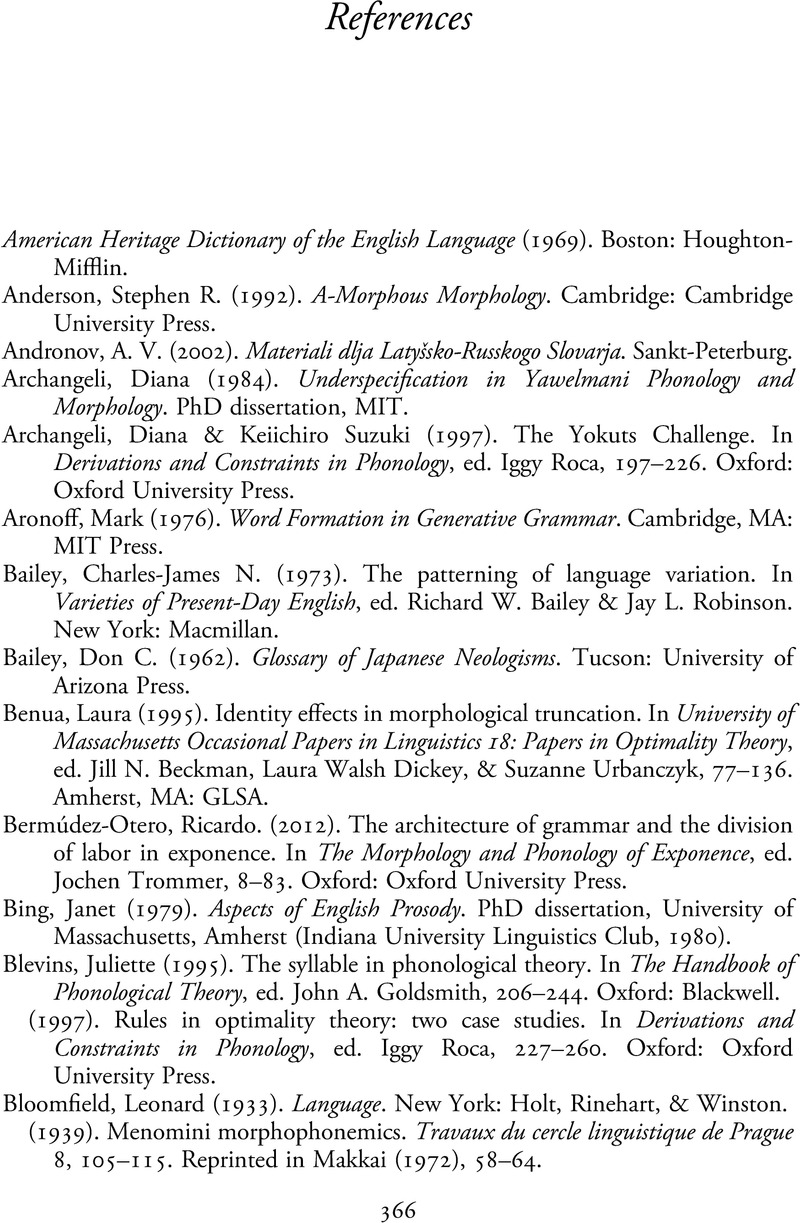Book contents
- The Lexical and Metrical Phonology of English
- The Lexical and Metrical Phonology of English
- Copyright page
- Contents
- Figures
- Preface
- Chapter 1 Theories of Phonology
- Chapter 2 Segmental Phonology
- Chapter 3 Syllables and Moras
- Chapter 4 English Stress
- Chapter 5 Prosodic Phonology
- Chapter 6 Lexical Phonology: The Cyclic Rules
- Chapter 7 Word-Level Phonology
- Chapter 8 Further Issues in Phonological Theory
- References
- Index
- References
References
Published online by Cambridge University Press: 18 June 2022
- The Lexical and Metrical Phonology of English
- The Lexical and Metrical Phonology of English
- Copyright page
- Contents
- Figures
- Preface
- Chapter 1 Theories of Phonology
- Chapter 2 Segmental Phonology
- Chapter 3 Syllables and Moras
- Chapter 4 English Stress
- Chapter 5 Prosodic Phonology
- Chapter 6 Lexical Phonology: The Cyclic Rules
- Chapter 7 Word-Level Phonology
- Chapter 8 Further Issues in Phonological Theory
- References
- Index
- References
Summary

- Type
- Chapter
- Information
- The Lexical and Metrical Phonology of EnglishThe Legacy of the Sound Pattern of English, pp. 366 - 374Publisher: Cambridge University PressPrint publication year: 2022

